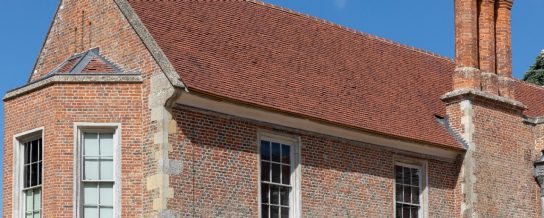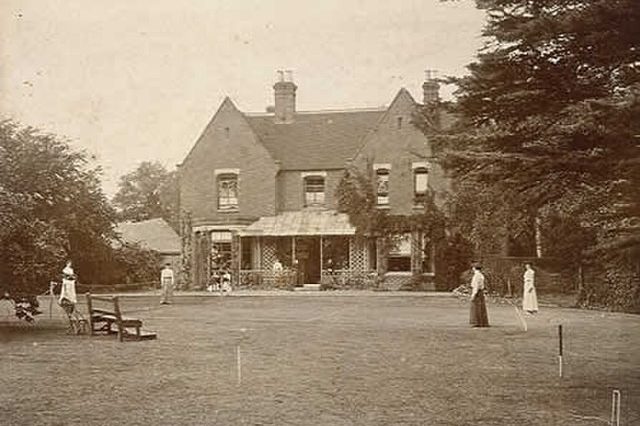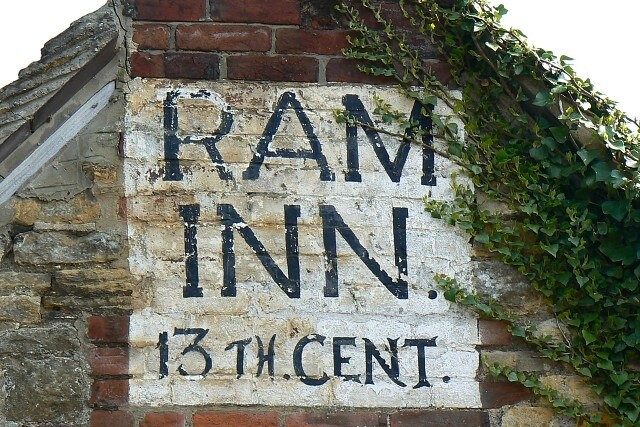Published 31/10/25




Published 31/10/25
Imagine waking up in the dead of night and hearing the wall whisper your name. The lights suddenly begin to flicker, and shadows begin to move, then you realise, even though you are alone, the house isn’t empty, it’s alive—more like a horror hotel fully booked with ghosts!
Every house has a story, some are heartwarming, others haunting; too terrifying to forget. But the ones we are about to explore are etched with fear and mystery. These aren’t just haunted houses; they are historical stories from Britain’s scariest legends. From cursed inns to ghost-infested castles, here is an intriguing read of Britain’s most haunted houses. Do not look behind you!
Located at 7 Linden Drive in the quiet town of Sheerness, Kent, The Dolls House has gained popularity for its paranormal activities, especially after night fall. The unassuming, non-descript Victorian detached house is said to be haunted by the spirits of children, their laughter echoing through the halls, and their shadows lurking everywhere.
Due to its reputation, the Dolls House regularly hosts series of social events by groups like Ghost Hunt UK, where people pay to have overnight sleepover investigations (an unguided tour) for a first-hand jaw-dropping experience of the eerie vibes and unexplained energy in the house.
Guests speak of catching cold chills from behind, dolls allegedly changing positions on their own, lights flickering in empty rooms, photo frames flinging themselves from walls, and whispers from disembodied voices echoing at night. Some say the house itself watches you, waiting for you to stay, forever.
Tucked away in the serene countryside of Hampshire, and built between 1500 and 1520 for Lord William Sandys, a trusted advisor to King Henry VIII, The Vyne is a magnificent Tudor manor with a legacy as grand as its architecture and a ghost story to match. Visitors have described unsettling experiences: whispers echoing through empty halls, sudden drops in temperature, and the feeling of unseen eyes watching. But the most chilling story was a guest waking up to silent monk in brown robes standing at the foot of their bed only to suddenly vanish without a trace.
In 2015, The Vyne faced a different kind of disturbance—severe storms that damaged its vast, historic roof. To restore the integrity of building, the National Trust partnered with wienerberger to replace the roof with over 71,000 handmade Keymer clay tiles. Chimney stacks were rebuilt, insulation added, and the manor’s Tudor character was meticulously preserved. This restoration not only protected the estate’s future but also may have stirred echoes of its haunted past.
The Ancient Ram Inn, located in Wotton-under-Edge, Gloucestershire, is widely regarded as one of the most haunted buildings in England, with a history dating back to 1145. The house is said to be linked to witchcraft, and demonic hauntings. Originally built as a “keeping house” for masons and slaves constructing nearby St. Mary’s Church, the inn later became a priest’s residence, then a public inn, and eventually a bed-and-breakfast.
Guests have reported being dragged from their beds by demonic forces, hearing intimidating growls, feeling pinned down or thrown, experiencing sudden drop in temperature, and witnessing weird phenomena like children’s laughter, dragging chains, flickering lights, and shadowy figures lurking in the corners.
The site is believed to lie on top an ancient pagan burial ground and intersect ley lines linked to Stonehenge, which many claim contributes to its paranormal energy. Currently, the inn is now a modern-day attraction for guided tours all year round.
Brian Robert Marshall / Ram Inn, Potters Pond, Wotton under Edge
Borley Rectory is famously known as “the most haunted house in England,” a title popularized by paranormal investigator Harry Price. Built in 1862 by Reverend Henry Dawson Ellis Bull to house his large family, the 23–32 rooms building was burned down in 1939. However, its legends live on through several series of scary activities: a regular visiting spirit said to be a nun who broke her vows for love and was bricked up alive seen gliding silently along the “Nun’s Walk” was reported by a later resident.
Another resident allegedly found some human remains in a cupboard, adding to the house’s spooky reputation amongst other scary encounters such as phantom footsteps etching at night, and messages appearing on walls— written by invisible hands. Despite public scepticism of the authenticity of this legend, Borley Rectory remains a cornerstone of British ghost lore, inspiring books, documentaries, and ongoing fascination.
Known as “the loveliest castle in the world,” with over 900 years of history, Leeds Castle has been a Norman stronghold, a royal residence, a Tudor palace, and even a wartime hospital. Behind its beauty and grandeur, the castle harbours a darker side—one filled with ghostly whispers, chilling tales, witchcraft, and unexplained phenomena.
One of the castle’s most enduring legends involves two ghostly black retrievers; one is said to bring good luck and the other, a harbinger of doom, appearing before tragedy or death. Their origins are linked to Eleanor Cobham, the wife of Duke Humphrey of Gloucester, who was accused of witchcraft and necromancy in the 15th century. Some believe the dogs are the lingering result of her dark spells.
Other frightening stories about Leeds Castle include sightings of the White Lady—believed to be Queen Joan of Navarre—wandering the Queen’s Bedroom, and chilling “time slip” experiences like Alice Pollock’s, where rooms transform into medieval scenes revealing ghostly figures lost in thought.
In 2013, Leeds Castle went through a significant renovation of its Gatehouse roof. The restoration was a collaborative effort led by wienerberger, involving the architect, roofer, and members of the Leeds Castle Foundation. The Gatehouse roof was replaced with 35,000 Keymer handmade clay tiles, preserving the castle’s historic character, structural integrity and durability.
True to its name, Chillingham Castle is a fortress of fear and is known to house ‘the Blue Boy,’ also known as ‘the Radiant Boy,’ a child ghost that screams at midnight before appearing in a flash of blue light. His cry is said to echo through the castle’s walls, especially near the Pink Room, where guests have reported sudden chills and unexplained flickering of lights.
Located in the remote countryside of Northumberland, Chillingham Castle was originally built in the 12th century and fortified in 1344. The Castle also offers ghost tours, overnight stays, and a chance to experience the heavy, oppressive energy that settles over them as they enter. Paranormal investigators have recorded strange voices, temperature drops, and even physical touches from unseen hands.
Whether you believe in ghosts or not, these haunted houses are powerful reminders of how much history a building can hold—and proof that even the most haunted homes deserve a second chance. Don’t let your house become the next haunted tale.